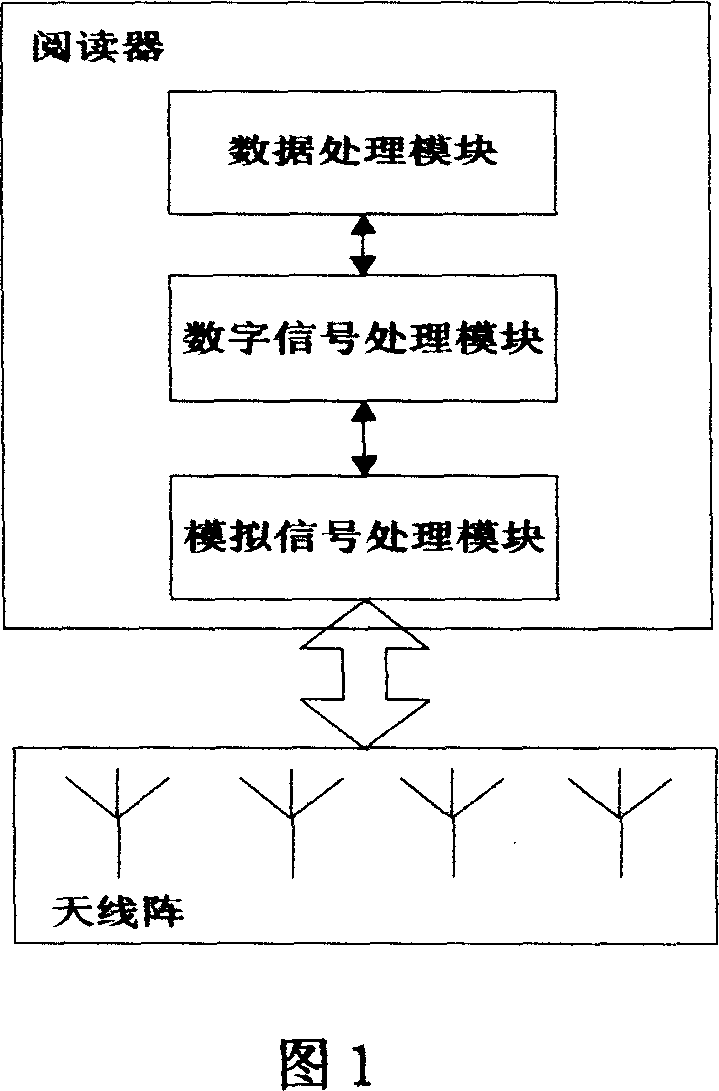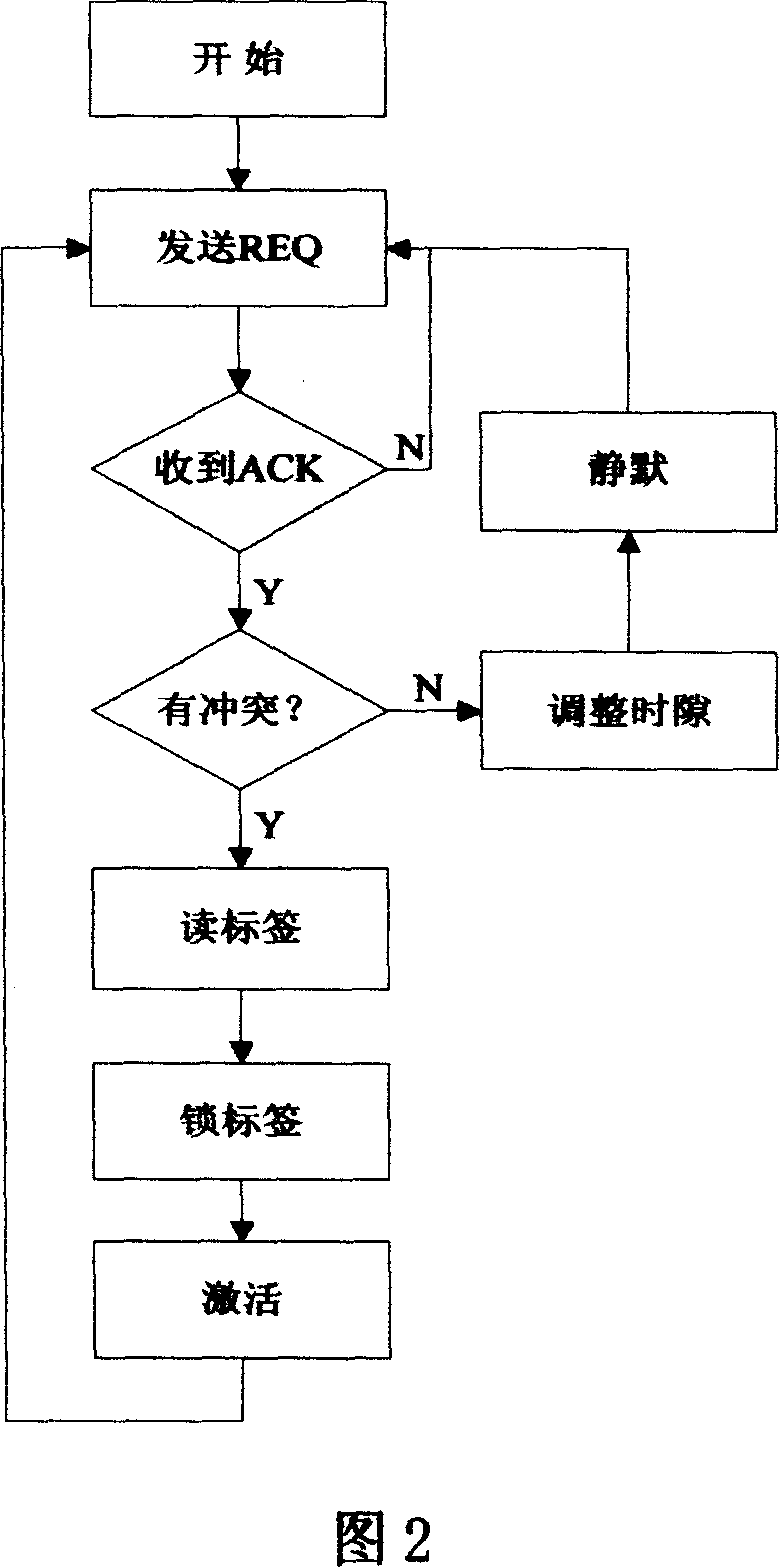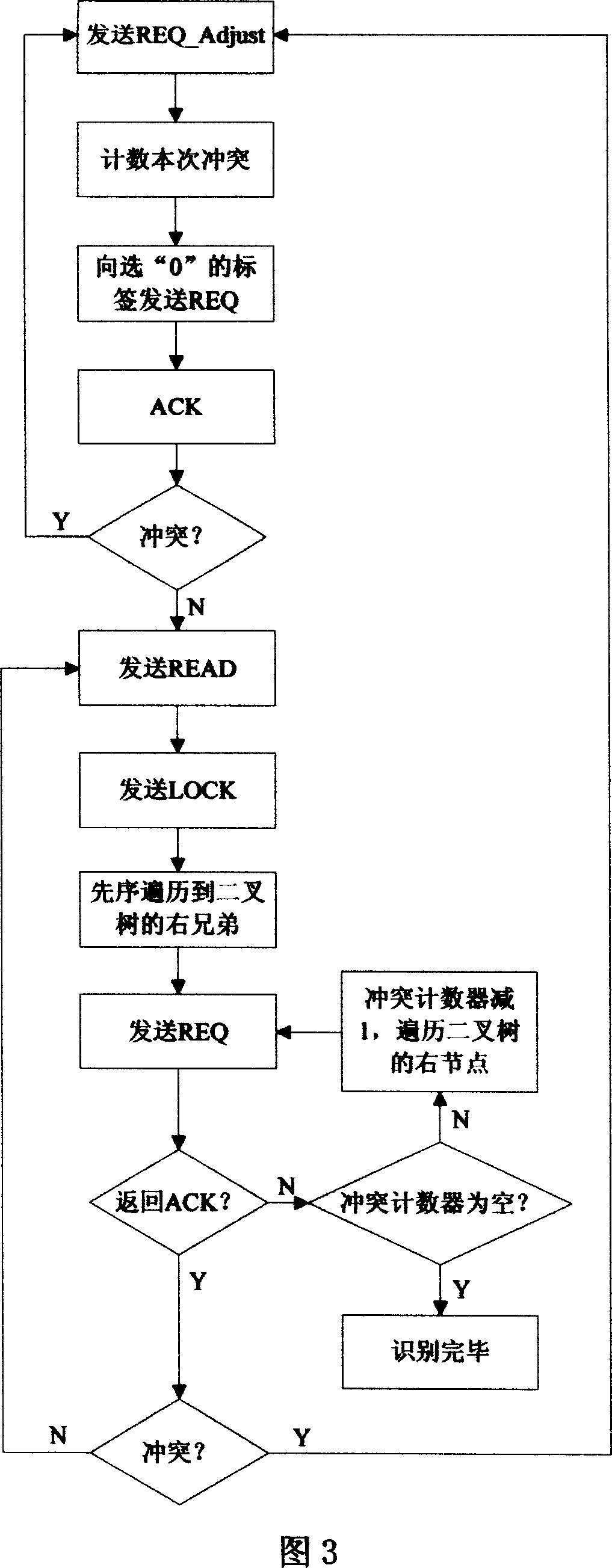Intelligent RFID reading system anticonflict scheduling method
A technology of reading system and scheduling method, applied in the field of radio frequency identification, can solve the problems of low identification efficiency and long search time, and achieve the effect of reducing the number of tags, improving the identification rate, and shortening the identification time of tags
- Summary
- Abstract
- Description
- Claims
- Application Information
AI Technical Summary
Problems solved by technology
Method used
Image
Examples
Embodiment
[0034] The schematic diagram of RFID reading system as shown in Figure 1, this RFID reading system comprises analog signal processing module, digital signal processing module, data processing module and antenna array, described antenna array is connected with analog signal processing module, and described data processing module The digital signal processing module is connected with the analog signal processing module. In the present invention, 4 antennas are used as the antenna array, but the multi-antenna described in the present invention is more than 4 antennas, and the number of antennas controlled by the reader can be adjusted according to specific conditions.
[0035] As shown in Figure 2, the schematic diagram of the interaction between the reader and the tag, its workflow is:
[0036] (1) Send a REQ command to the tag through the antenna;
[0037] (2) Receive ACK, if only one tag responds to send ACK at this time, then the reader can recognize the ACK, if there are mul...
PUM
 Login to View More
Login to View More Abstract
Description
Claims
Application Information
 Login to View More
Login to View More - R&D
- Intellectual Property
- Life Sciences
- Materials
- Tech Scout
- Unparalleled Data Quality
- Higher Quality Content
- 60% Fewer Hallucinations
Browse by: Latest US Patents, China's latest patents, Technical Efficacy Thesaurus, Application Domain, Technology Topic, Popular Technical Reports.
© 2025 PatSnap. All rights reserved.Legal|Privacy policy|Modern Slavery Act Transparency Statement|Sitemap|About US| Contact US: help@patsnap.com



